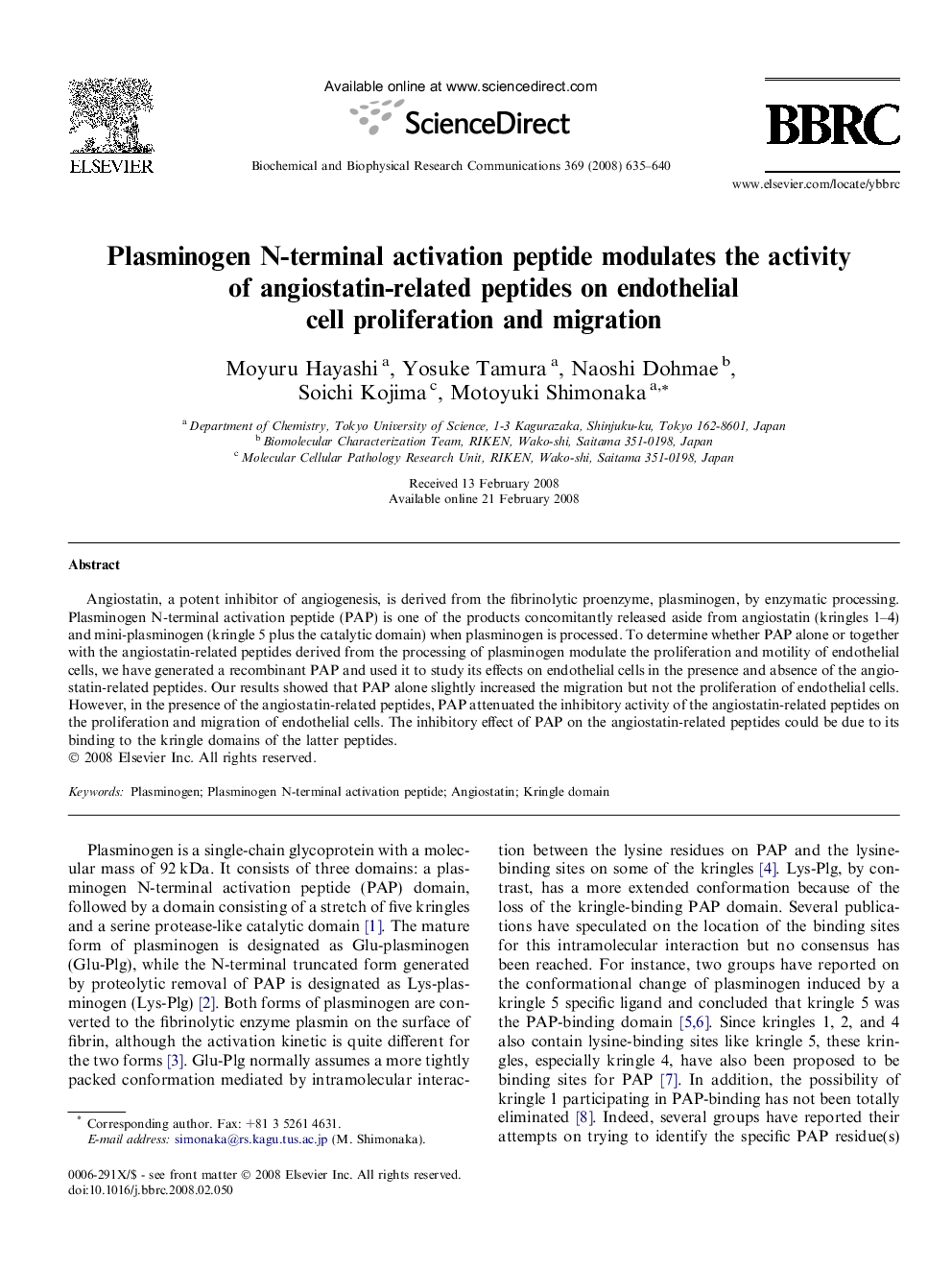| Article ID | Journal | Published Year | Pages | File Type |
|---|---|---|---|---|
| 1935940 | Biochemical and Biophysical Research Communications | 2008 | 6 Pages |
Abstract
Angiostatin, a potent inhibitor of angiogenesis, is derived from the fibrinolytic proenzyme, plasminogen, by enzymatic processing. Plasminogen N-terminal activation peptide (PAP) is one of the products concomitantly released aside from angiostatin (kringles 1-4) and mini-plasminogen (kringle 5 plus the catalytic domain) when plasminogen is processed. To determine whether PAP alone or together with the angiostatin-related peptides derived from the processing of plasminogen modulate the proliferation and motility of endothelial cells, we have generated a recombinant PAP and used it to study its effects on endothelial cells in the presence and absence of the angiostatin-related peptides. Our results showed that PAP alone slightly increased the migration but not the proliferation of endothelial cells. However, in the presence of the angiostatin-related peptides, PAP attenuated the inhibitory activity of the angiostatin-related peptides on the proliferation and migration of endothelial cells. The inhibitory effect of PAP on the angiostatin-related peptides could be due to its binding to the kringle domains of the latter peptides.
Keywords
Related Topics
Life Sciences
Biochemistry, Genetics and Molecular Biology
Biochemistry
Authors
Moyuru Hayashi, Yosuke Tamura, Naoshi Dohmae, Soichi Kojima, Motoyuki Shimonaka,
